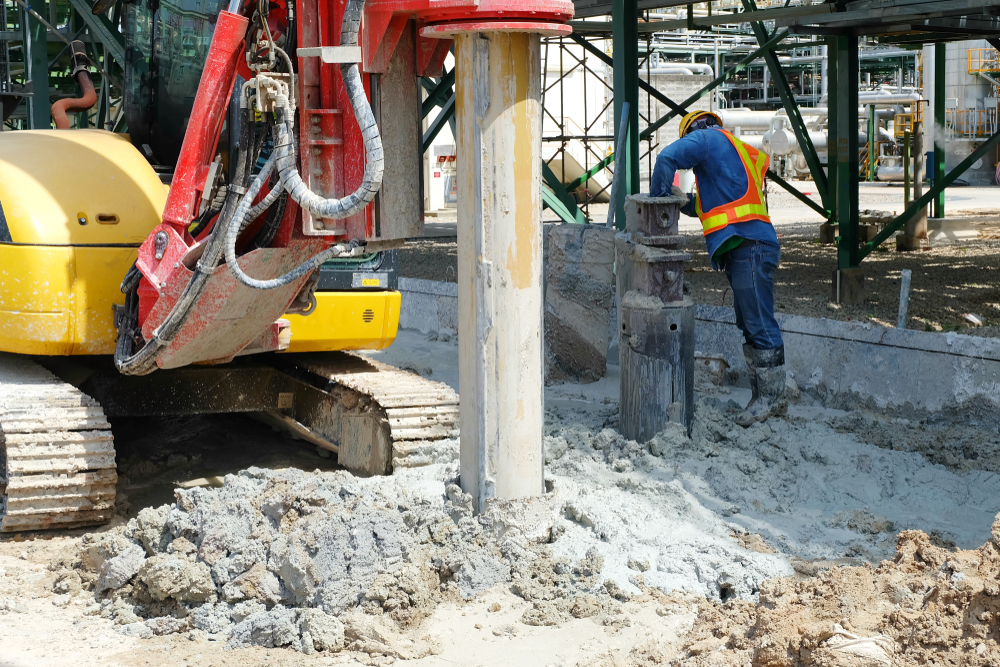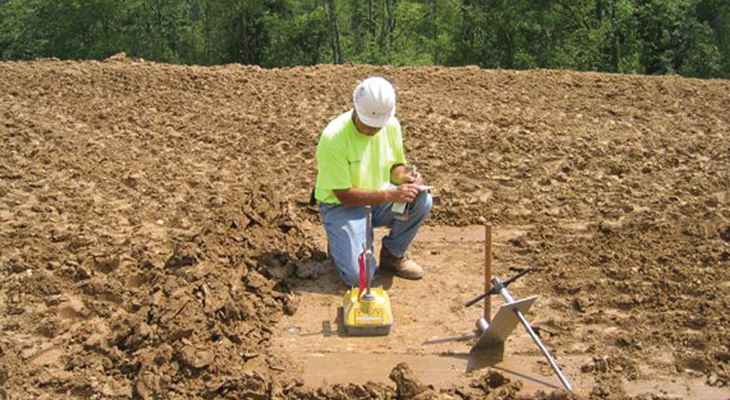A Thorough Overview of Geotechnical Engineering Techniques and Their Impact on Modern Civil Engineering Projects
Geotechnical design serves as the backbone of modern-day civil engineering, giving necessary techniques that resolve the complexities of subsurface problems. The interplay of soil evaluation, foundation style, and innovative innovations forms the honesty and sustainability of infrastructure jobs.
Significance of Geotechnical Design
Geotechnical engineering functions as a crucial structure for civil design projects, influencing the security and security of frameworks. This discipline focuses on the habits of dirt and rock products, providing necessary understandings that direct the style and building processes. By comprehending the interaction in between the planet and crafted frameworks, geotechnical designers can evaluate dangers linked with ground problems, such as negotiation, incline security, and liquefaction.
The importance of geotechnical engineering extends beyond mere structural stability; it plays a crucial duty in environmental management and sustainability. Effectively performed geotechnical evaluations guarantee that jobs reduce their environmental footprint and follow regulative requirements (geotechnical engineer description). Geotechnical engineering is crucial in website choice, enabling designers to determine suitable areas for building that reduce possible dangers.
On top of that, geotechnical design promotes innovation in civil design by advancing strategies for ground enhancement, foundation style, and excavation. The discipline's payments are important in attending to obstacles positioned by varying soil problems, hence assisting in efficient and risk-free infrastructure advancement. Overall, the relevance of geotechnical engineering is paramount in making certain that civil design jobs are not only viable but likewise resilient against all-natural and manufactured misfortunes.
Key Methods in Geotechnical Design

One more crucial technique is soil stabilization, which includes changing dirt buildings to improve load-bearing ability or lower settlement. Methods such as adding cement, lime, or utilizing geosynthetics are generally made use of to achieve soil improvement.
Ground improvement techniques, including dynamic compaction and vibro-replacement, are likewise important. These techniques aim to densify soft or loose soils, enhancing their strength and decreasing liquefaction potential in seismic areas.
Retaining structures, such as sheet heaps and dirt nailing, are used to sustain excavations and protect against dirt activity. Incline stabilization techniques, including water drainage systems and preserving wall surfaces, are vital for reducing landslide risks.

Dirt Evaluation and Checking Methods
Effective dirt analysis and testing approaches are crucial for recognizing the chemical and physical properties of dirt, which directly affect engineering choices. A thorough evaluation of dirt attributes is vital for predicting actions under different loading problems and ecological influences.
Usual soil testing approaches include both area and lab strategies. Field tests, such as the Standard Infiltration Examination (SPT) and Cone Infiltration Examination (CPT), supply immediate insights into soil stratification, stamina, and density. These examinations aid engineers examine site conditions effectively before more extensive research laboratory analyses.
Research laboratory screening approaches, such as Atterberg limits, grain size distribution, and compaction tests, are vital for figuring out soil plasticity, wetness content, and optimal compaction levels. Advanced methods like triaxial examinations and combined undrained (CU) examinations use useful data on shear stamina and efficient stress criteria.
Chemical testing, consisting of pH, check it out electrical conductivity, and natural material analysis, is additionally crucial for understanding possible soil contamination and its impact on building and construction materials. Jointly, these dirt analysis and testing approaches develop the structure of informed decision-making in geotechnical engineering, making certain the security and stability of contemporary civil engineering jobs.
Foundation Layout Approaches
Foundation design approaches are essential in making certain the stability and longevity of structures. These approaches can be categorized right into shallow and deep foundations, each fit to details soil problems and loading situations. Shallow structures, such as spread footings and mat structures, are generally used when surface soils have adequate bearing capability. They disperse the load over a larger area, reducing settlement threats.
On the other hand, deep foundations, including piles and drilled shafts, are employed when surface soils are weak or inadequate for supporting the framework. These structures transfer lots to much deeper, more stable soil or rock layers, making them vital for high-rise structures and bridges in difficult geotechnical problems.
Choosing the suitable foundation design entails complete geotechnical examinations, including soil composition, birthing ability, and groundwater problems. Designers need to think about aspects such as settlement, lateral loads, and potential seismic task to guarantee the structure's performance over time.
Ultimately, a well-executed structure design is a crucial element of civil engineering, straight influencing the safety and security, durability, and capability of structures. geotechnical engineer description. By straightening foundation kinds with site-specific conditions, designers can efficiently mitigate dangers connected with structure failure
Developments Forming Civil Design

Lasting products, such as high-performance concrete and recycled accumulations, are additionally gaining traction, promoting environmentally friendly methods while keeping architectural integrity. Furthermore, progressed geotechnical strategies, such as ground improvement and deep mixing techniques, are enhancing the security of structures in challenging soil conditions.
Additionally, using drones and remote sensing innovation blog is improving site checking and evaluating, giving real-time information that help in managing construction progress this link and safety. The implementation of innovative building and construction methods, such as modular and premade building, additionally accelerates project timelines and decreases waste. Collectively, these advancements are not just transforming civil design practices yet likewise ensuring that modern framework satisfies the demands of an expanding global populace while attending to environmental problems.
Final Thought
In verdict, geotechnical engineering methods are integral to the success of contemporary civil design tasks. By employing these methods, designers can minimize risks and add to the development of durable city environments, ultimately cultivating sustainable growth and safety and security in civil engineering techniques.
Geotechnical design serves as the foundation of contemporary civil design, offering necessary strategies that resolve the intricacies of subsurface problems.Geotechnical design offers as a crucial foundation for civil engineering projects, influencing the security and stability of structures.In addition, geotechnical design cultivates innovation in civil engineering by advancing techniques for ground improvement, structure layout, and excavation. On the whole, the significance of geotechnical engineering is paramount in guaranteeing that civil engineering projects are not just feasible but also resilient against natural and synthetic adversities.
In conclusion, geotechnical design methods are indispensable to the success of contemporary civil design projects.
Comments on “Discovering the Duty of a Geotechnical Engineer Description and Duties”